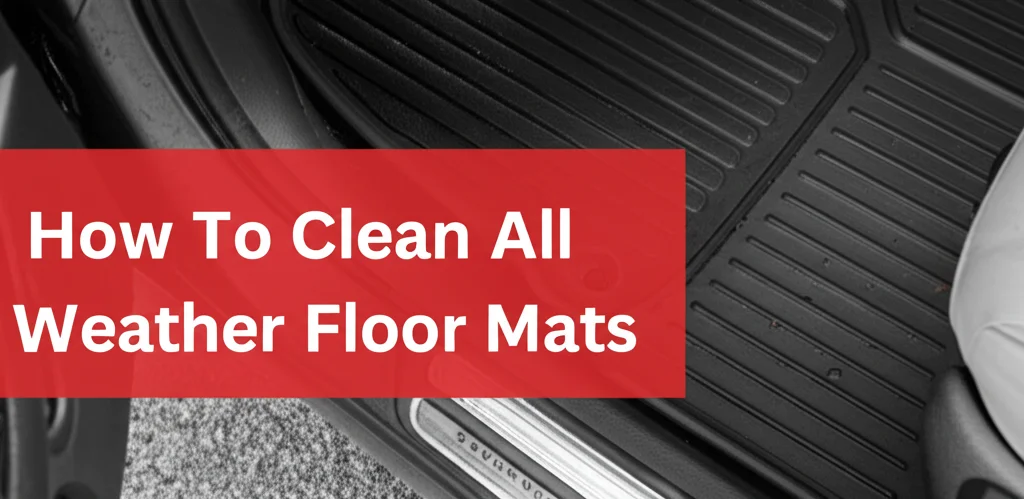· Auto Detailing · 6 min read
How To Clean Car Seat Tracks?

How To Clean Car Seat Tracks?
Ever notice how the car seat doesn’t glide as smoothly as it used to? Often, the culprit isn’t a mechanical issue, but a buildup of dirt, crumbs, and grime in the car seat tracks. Cleaning these tracks isn’t just about comfort; it’s about maintaining the functionality of your car seats. This article will walk you through a step-by-step guide on how to clean car seat tracks effectively, keeping them moving freely and extending their lifespan. We’ll cover everything from the tools you’ll need to the best cleaning solutions and techniques.
Takeaway:
- Regularly vacuum the tracks to remove loose debris.
- Use a detail brush and cleaning solution to dislodge stubborn grime.
- Lubricate the tracks after cleaning for smooth operation.
- Prevent future buildup with routine cleaning and maintenance.
What’s the quickest way to clean car seat tracks?
A quick clean involves vacuuming the tracks with a crevice tool, followed by a wipe-down with a damp microfiber cloth and a mild all-purpose cleaner. For tougher grime, a detail brush can help loosen debris before wiping.
Why Cleaning Car Seat Tracks Matters
Let’s face it, car seats endure a lot. From dropped snacks to tracked-in dirt, the tracks are a magnet for all sorts of debris. Over time, this buildup can cause friction, making it difficult to adjust your seat. This can be frustrating and even a safety concern if you need to quickly adjust your seating position. Cleaning car seat tracks regularly prevents this friction, ensuring smooth operation and preventing potential damage to the mechanism.
Beyond functionality, clean tracks contribute to a more pleasant driving experience. A clean interior simply feels better, and addressing these often-overlooked areas shows attention to detail. It also helps maintain the resale value of your vehicle, as a well-maintained interior is always a plus for potential buyers.
Tools You’ll Need to Get Started
Before you begin, gather the necessary tools to make the cleaning process efficient and effective. You won’t need anything fancy, just a few essentials.
- Vacuum Cleaner with Crevice Tool: This is your first line of defense against loose dirt and debris. The crevice tool allows you to reach into the narrow spaces of the tracks.
- Detail Brushes: A set of detail brushes in various sizes is crucial for dislodging stubborn grime. Look for brushes with stiff bristles.
- Microfiber Cloths: These are essential for wiping down the tracks and applying cleaning solutions. They’re gentle on surfaces and highly absorbent.
- All-Purpose Cleaner: A mild all-purpose cleaner is effective for dissolving dirt and grime. Avoid harsh chemicals that could damage the seat mechanism. You can also use a dedicated interior detailer.
- Lubricant (Silicone-Based): After cleaning, a silicone-based lubricant will help ensure smooth seat movement. Avoid oil-based lubricants, as they can attract dust and grime.
- Cotton Swabs: These are useful for cleaning hard-to-reach areas and applying lubricant precisely.
- Gloves (Optional): Protect your hands from cleaning solutions.
Step-by-Step Guide to Cleaning Car Seat Tracks
Now that you have your tools, let’s get to the cleaning process. Follow these steps for a thorough and effective clean.
- Vacuum the Tracks: Start by thoroughly vacuuming the car seat tracks with the crevice tool. Move the vacuum back and forth to remove as much loose dirt and debris as possible. Pay attention to corners and crevices where debris tends to accumulate.
- Apply Cleaning Solution: Lightly spray a microfiber cloth with your chosen all-purpose cleaner. Avoid spraying directly into the tracks, as this could damage the seat mechanism.
- Scrub with Detail Brushes: Use a detail brush to scrub the tracks, working the cleaning solution into the grime. Focus on areas with heavy buildup. Use different brush sizes to reach all areas of the track.
- Wipe Clean: Use a clean microfiber cloth to wipe away the cleaning solution and loosened dirt. Repeat steps 2 and 3 if necessary, until the tracks are clean.
- Address Stubborn Spots: For particularly stubborn spots, use a cotton swab dipped in cleaning solution to target the area directly. Let it sit for a few minutes before wiping clean.
- Lubricate the Tracks: Once the tracks are clean and dry, apply a small amount of silicone-based lubricant to each track. Move the seat back and forth to distribute the lubricant evenly. This will ensure smooth seat movement.
- Final Wipe Down: Use a clean microfiber cloth to wipe away any excess lubricant.
Dealing with Different Types of Grime
Different types of grime require slightly different approaches. Here’s how to tackle common issues.
- Dried Food & Crumbs: Vacuum thoroughly, then use a detail brush to loosen any remaining particles. A slightly damp microfiber cloth can help pick up stubborn crumbs.
- Sticky Residue: Use a dedicated adhesive remover or a mild all-purpose cleaner. Apply it to a microfiber cloth and gently rub the residue until it dissolves.
- Dust & Dirt: Regular vacuuming is the best defense against dust and dirt. A detail brush can help dislodge dirt from hard-to-reach areas.
- Pet Hair: A pet hair removal tool or a rubber glove can effectively lift pet hair from the tracks. Vacuum afterward to remove any remaining hair.
Preventing Future Buildup: Maintenance Tips
Cleaning car seat tracks is important, but preventing buildup is even better. Here are some maintenance tips to keep your tracks clean and functioning smoothly.
- Regular Vacuuming: Vacuum the tracks at least once a month to remove loose debris.
- Avoid Eating in the Car: This is the easiest way to prevent food crumbs from accumulating in the tracks.
- Use Seat Covers: Seat covers can protect the tracks from dirt and spills.
- Wipe Down Regularly: Wipe down the tracks with a damp microfiber cloth every few weeks to remove any surface dirt.
- Promptly Clean Spills: Clean up any spills immediately to prevent them from drying and becoming sticky.
FAQ: Your Car Seat Track Cleaning Questions Answered
- Can I use water to clean car seat tracks? While a slightly damp cloth is okay, avoid using excessive water, as it can damage the seat mechanism.
- What type of lubricant should I use? Always use a silicone-based lubricant. Oil-based lubricants can attract dust and grime.
- How often should I clean my car seat tracks? Aim to clean them thoroughly every 3-6 months, and vacuum them monthly.
- Will cleaning the tracks fix a completely stuck seat? Cleaning can help, but a completely stuck seat may require professional repair.
- Is it safe to use harsh chemicals on car seat tracks? No, avoid harsh chemicals as they can damage the seat mechanism and potentially release harmful fumes.
Conclusion: Keep Your Seats Moving Smoothly
Cleaning car seat tracks is a simple yet effective way to maintain the functionality and comfort of your vehicle. By following the steps outlined in this guide, you can easily remove dirt, debris, and grime, ensuring smooth seat adjustment and preventing potential damage. Remember to vacuum regularly, use the right tools and cleaning solutions, and lubricate the tracks after cleaning. A little preventative maintenance goes a long way in keeping your car seats moving freely for years to come. Don’t let dirty tracks hinder your driving experience – take a few minutes to clean them today! For more car cleaning tips, explore our other articles on https://www.beacleaner.com/how-to-clean-car-carpet-without-a-machine/ to keep your entire vehicle looking its best.




